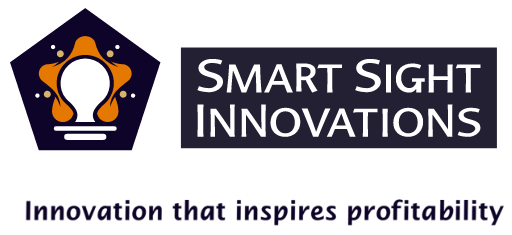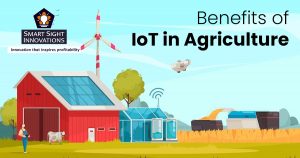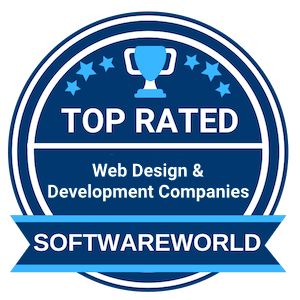
As the number of IoT devices grows, managing them effectively becomes critical. Proper management ensures these devices function optimally, remain secure from cyber threats, and integrate seamlessly into existing systems.
This article dives into the world of IoT device control and management, exploring various methods to streamline your smart home or business operations. It outlines different techniques for device discovery, configuration, automation, and security, giving you the tools you need to achieve seamless control over your interconnected world of IoT devices.
Basic Principles of IoT Device Control
Controlling IoT devices involves sending commands from a central system to perform specific actions. This can include turning devices on or off, adjusting settings, or collecting data. Key principles of IoT device control include:
-
Real-Time Responsiveness
IoT devices often require real-time responsiveness to operate efficiently. This means that commands sent to these devices must be executed almost instantaneously. For example, smart home devices like lights and thermostats should respond immediately to user commands to ensure a seamless experience.
-
Reliability
Reliability is crucial in IoT device control. Devices must consistently perform their intended functions without frequent failures or interruptions. This is especially important in industrial and healthcare settings, where device malfunctions can lead to significant operational disruptions or even safety hazards.
-
Scalability
IoT systems must be scalable to accommodate an increasing number of devices. As organizations expand their IoT deployments, the control systems must handle additional devices without compromising performance. This requires robust infrastructure and efficient data handling capabilities.
-
Interoperability
Interoperability guarantees the smooth operation of IoT devices made by different manufacturers. Standard communication protocols and open Application Programming Interfaces (APIs) facilitate interoperability, allowing diverse devices to be integrated into a unified control system.
-
Security
Security is paramount in IoT device control due to the sensitive nature of the data being transmitted and the potential risks of unauthorized access. Implementing strong encryption, secure authentication methods, and regular software updates helps protect devices from cyber threats.
-
Automation
Automation enhances the efficiency of IoT device control. Automated systems can perform routine tasks, such as adjusting device settings based on predefined conditions, without human intervention. This reduces the need for manual control and ensures consistent device performance.
-
Data Integration
The massive volumes of data generated by IoT devices must be gathered, examined, and used. Effective data integration allows for comprehensive monitoring and control, enabling predictive maintenance, optimization of operations, and improved decision-making.
Key Technologies in IoT Device Control
The effective control and management of IoT devices hinge on several key technologies. These technologies enable the seamless operation, communication, and integration of IoT devices across diverse applications.
-
Cloud Computing
Cloud computing provides the backbone for IoT device control, offering scalable infrastructure for data storage, processing, and analytics. Cloud platforms such as AWS, Microsoft Azure, and Google Cloud enable centralized management, remote monitoring, and real-time data analysis. This facilitates efficient device control and simplifies the deployment and management of large IoT networks.
-
Edge Computing
Edge computing brings data processing closer to the IoT devices, reducing latency and bandwidth usage. It improves real-time responsiveness and dependability by processing data close to the source of data generation, at the edge of the network. This is crucial for applications like smart grids, driverless cars, and industrial automation that call for quick decisions.
-
Machine Learning (ML) and Artificial Intelligence (AI)
The development of AI and ML is essential for the advancement of IoT device autonomy and intelligence. These technologies enable predictive maintenance by analyzing historical data to predict potential failures and schedule timely interventions. AI algorithms can optimize device operations, enhance energy efficiency, and provide advanced analytics for better decision-making.
-
Blockchain
Blockchain technology enhances the security and transparency of IoT device interactions. By creating a decentralized and immutable ledger of all transactions, blockchain ensures data integrity and prevents unauthorized access. This is particularly valuable in applications where trust and data security are paramount, such as supply chain management, healthcare, and finance.
-
Communication Protocols
Effective IoT device control relies on robust communication protocols that facilitate reliable and secure data exchange. MQTT (Message Queuing Telemetry Transport), CoAP (Constrained Application Protocol), and HTTP/HTTPS are common protocols. These protocols ensure seamless communication between devices and central control systems, supporting interoperability and scalability.
-
IoT Management Platforms
IoT management platforms provide comprehensive solutions for device control, monitoring, and analytics. These platforms offer features like device provisioning, firmware updates, security management, and data visualization. Examples include IBM Watson IoT, Cisco IoT Control Center, and ThingWorx, which streamline the deployment and management of IoT ecosystems.
Key Aspects of Continuous Monitoring
Several key aspects are involved in the continuous monitoring of IoT devices:
-
Performance Metrics
Monitoring performance metrics such as CPU usage, memory consumption, and battery life is crucial. These metrics help identify inefficiencies and potential issues. For example, a sudden spike in CPU usage might indicate a malware infection or a software bug that needs attention.
-
Health Checks
Regular health checks involve assessing the operational status of devices, including connectivity, sensor accuracy, and data integrity. Automated health checks can alert administrators to issues like sensor drift, communication failures, or hardware malfunctions.
-
Environmental Monitoring
For devices operating in challenging environments, monitoring environmental factors like temperature, humidity, and vibration is essential. Environmental sensors provide early warnings of conditions that might lead to device failures, allowing for preventive measures to be taken.
-
Network Monitoring
Continuous monitoring of network connections ensures that IoT devices maintain reliable and secure communication. This includes tracking data transmission rates, identifying bottlenecks, and detecting potential intrusions.
Benefits of Continuous Monitoring
Continuous monitoring of IoT devices offers numerous advantages that contribute to the effective management and operation of these systems. Here are some key benefits:
-
Proactive Maintenance
Continuous monitoring enables proactive maintenance by identifying potential issues before they escalate into significant problems. By tracking performance metrics and health indicators in real-time, administrators can address minor issues promptly, preventing major failures and reducing downtime. This proactive approach extends the lifespan of IoT devices and ensures uninterrupted operation.
-
Enhanced Security
Security is a major concern for IoT devices, which are often targeted by cyber threats due to their connectivity. Continuous monitoring helps detect security breaches, unauthorized access attempts, and unusual activities promptly. Real-time alerts enable quick responses to potential threats, mitigating risks and protecting sensitive data from cyberattacks.
-
Optimized Performance
Monitoring IoT devices continuously ensures that they operate at peak efficiency. Performance metrics such as CPU usage, memory consumption, and battery life are tracked in real-time, allowing for adjustments that optimize device functionality. This results in better resource utilization, energy efficiency, and overall system performance.
-
Improved Data Accuracy
Continuous monitoring helps maintain the accuracy and reliability of the data collected by IoT devices. By regularly checking and calibrating sensors and other data-gathering components, organizations can ensure that the information they rely on for decision-making is precise and trustworthy. This is crucial for applications where data integrity is paramount, such as healthcare and industrial automation.
-
Cost Efficiency
By preventing major failures and optimizing device performance, continuous monitoring leads to significant cost savings. Proactive maintenance reduces the need for expensive repairs and replacements, while energy-efficient operation lowers operational costs. Additionally, the improved accuracy of data supports better decision-making, further contributing to cost efficiency.
-
Enhanced User Experience
For consumer-facing IoT devices, continuous monitoring ensures a seamless user experience. Reliable performance, security, and efficient operation contribute to user satisfaction, leading to higher adoption rates and customer loyalty.
Implementing Continuous Monitoring
Implementing continuous monitoring for IoT (Internet of Things) devices is crucial for maintaining their performance, security, and reliability. The process involves several key steps and considerations to ensure effective monitoring and timely responses to potential issues.
-
Deploy Monitoring Tools
The first step in implementing continuous monitoring is to deploy specialized monitoring tools and platforms. These tools provide real-time tracking of device metrics, health indicators, and environmental conditions. Solutions like PRTG Network Monitor, Datadog, and AWS IoT Device Management offer customizable dashboards, alerts, and reporting capabilities. These tools should be chosen based on their ability to scale, integrate with existing systems, and support various IoT protocols.
-
Set Thresholds and Alerts
Defining thresholds for key performance indicators (KPIs) is essential for effective monitoring. KPIs might include CPU usage, memory consumption, battery life, and network latency. Setting thresholds allows for the creation of alerts that notify administrators when these thresholds are breached. Alerts can be sent via email, SMS, or integrated with other notification systems, ensuring that potential issues are addressed promptly.
-
Automate Health Checks
Automating regular health checks is critical for maintaining the operational status of IoT devices. Health checks assess connectivity, sensor accuracy, and data integrity. The necessity for manual intervention can be decreased by using automated devices to carry out these inspections at predetermined intervals. Automated health checks quickly identify and address issues such as sensor drift, communication failures, or hardware malfunctions.
-
Integrate with Analytics Platforms
Integrating monitoring tools with analytics platforms provides deeper insights into device performance and operational trends. Analytics platforms can process vast amounts of data collected from IoT devices, enabling predictive maintenance and informed decision-making. To spot trends and anticipate possible problems, ML algorithms can evaluate both historical and current data, enabling proactive intervention.
-
Address Scalability and Interoperability
Scalability and interoperability are significant challenges in continuous monitoring. As the number of IoT devices grows, the monitoring solution must handle increasing data volumes and device counts. Choosing scalable tools and platforms that support a wide range of IoT protocols and standards is essential for seamless integration and management.
-
Ensure Data Security
Security is paramount in continuous monitoring. Implementing robust security measures such as encryption, secure authentication, and regular software updates protects the data collected by IoT devices. Network segmentation can also isolate IoT devices, limiting the potential impact of security breaches.











